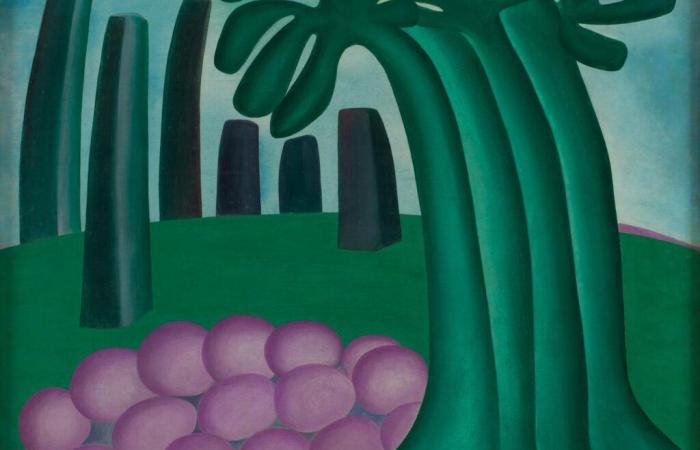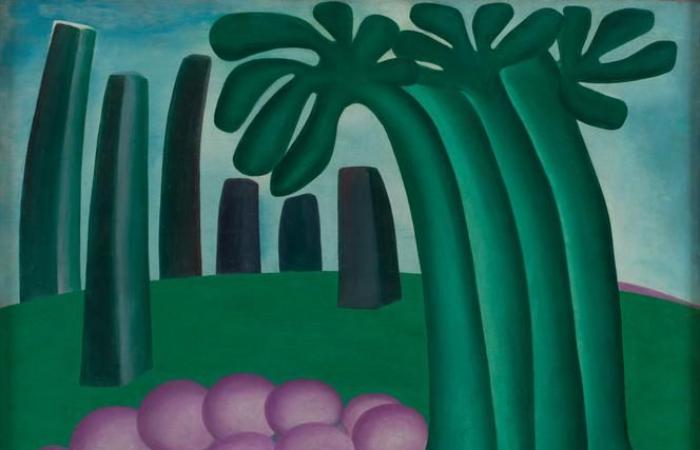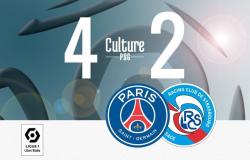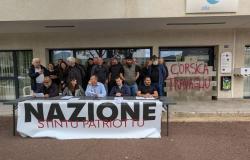Tarsila do Amaral (1886-1973) is the major figure of artistic creation in Brazil between the wars. Although she had made many visits to France, she had never been the subject of a retrospective there. The one presented by the Luxembourg Museum in Paris brings together nearly 150 works and documents. But, because it is quite exhaustive, it gives rise to contradictory thoughts, to the point of discomfort.
The artist was born in 1886 into an upper-middle-class family in the state of Sao Paulo, at the head of fazendas, these large land properties devoted to coffee. His childhood and adolescence conform to this comfortable situation: a good education, a Belgian tutor to speak French, piano lessons, a first trip to Europe at 16 and a marriage at 18 with a cousin of his mother, union which lasts a short time. The young woman preferred painting to the piano, which she studied in Sao Paulo, then in Paris, where she went in 1920. Académie Julian, Louvre, first painting accepted at the Salon of the Society of French Artists in 1922, late impressionism: first of all, it is far from what agitates Parisian intellectual life. But she quickly realizes it.
Returning to Sao Paulo in 1922, she joined the writers who called themselves “modern”, founded a group with them, linked up with the poet and essayist Oswald de Andrade (1890-1954), and returned to Paris with him in 1923. In March, she enrolled in classes with André Lhote, who claimed to be a Cubist. The couple met Blaise Cendrars, thanks to whom they met Constantin Brancusi, Georges Braque, Sonia and Robert Delaunay, Pablo Picasso… In October, she briefly followed the teaching of Fernand Léger. His financial ease allowed him to acquire works by his new friends. The initiation is therefore quick and its effects are clearly seen: geometric lines, frontal color planes and curved volumes modulated à la Léger. She applied these plastic solutions to the landscapes of Brazil, where she returned in December 1923 and where Cendrars stayed at the beginning of 1924.
Primordial Snake and Egg
In the years that followed, the Amaral-Andrade couple embodied Brazilian modernism in Brazil and France, she in her intensely colored canvases composed of few straight or curved lines, and he through his poems and essays. They live alternately in the two countries, where she exhibits successfully.
Read the review (2005): The great era of Tarsila do Amaral
Add to your selections
Under trees with cylindrical trunks and oval palms, she reveals half-real, half-imaginary fauna and very disproportionate human forms, like Picasso’s nudes. Abaporu (1928) is the archetype: a body with enlarged right legs and feet and a tiny head, sitting near a cactus under a round sun. The drawing is published in the center of Anthropophagous manifesto published by Andrade in May 1928. This text, more lyrical than limpid, is intended to be the birth certificate of a Brazilian art in which indigenous Indian cultures and Western culture would come together. Andrade cites the myth of the great serpent and exalts the resistance of Indian peoples to colonial acculturation. The cannibalism invoked in the title would be the metaphor for this resistance. This “anthropophagy” hybrid, Amaral paints it: ox with very long horns in the forest, snake and primordial egg, vegetation with sexual forms. And, always, intense greens and blues.
You have 41.73% of this article left to read. The rest is reserved for subscribers.







